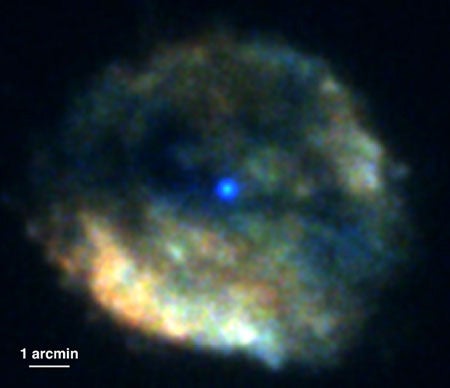Every two years NASA reviews the scientific performance of its astronomical satellites to decide whether they should continue in operation and what their funding levels should be. This month, NASA has released its most recent report that ranks Swift top out of the nine satellites — even though almost all of the others were launched more recently than Swift.
The Swift satellite discovers and measures gamma-ray bursts (GRBs), the most powerful explosions in the universe. When a massive star dies and when two neutron stars collide, a new black hole likely forms. It is this process that makes a GRB. Because these blasts are so powerful, they can be seen from the most distant parts of the universe, enabling astronomers to study how galaxies in the early universe are different from those around us now.
The Swift satellite includes an X-ray camera provided by the University of Leicester and an ultraviolet optical telescope substantially provided by the MSSL. These instruments have been providing vital measurements of the afterglow radiation of GRBs successfully since Swift launched in November 2004.
According to the May 2014 NASA Senior Review, “Swift is the premier facility for multi-wavelength time domain astronomy in the world”, and “Swift continues to provide unique and exciting science both as stand-alone results and as part of multi-wavelength campaigns.” The review commended Swift’s broad and responsive scientific program, working together with other world-leading observatories, aiming to find the origin of short GRBs, to explore the universe when it was less than 5 percent of its current age, performing surveys of supernova explosions to study the expansion of the universe, and making unique searches for rare types of cosmic explosions.
As a result of the 2014 Senior Review, Swift will continue to collect new observations of the universe for at least the next two years and probably the two years after that, too. In the UK, Swift work at the University of Leicester and at MSSL was recently awarded funding for a further two years by the UK Space Agency, allowing UK scientists to work on the exciting results that Swift provides.
“This is a ringing endorsement of the work we have been doing and a great tribute to the international Swift team,” said Julian Osborne, leader of the University of Leicester Swift team. “To be ranked first after more than nine years in orbit is a remarkable result. It shows the very high scientific value of searching the sky for new X-ray sources.”










